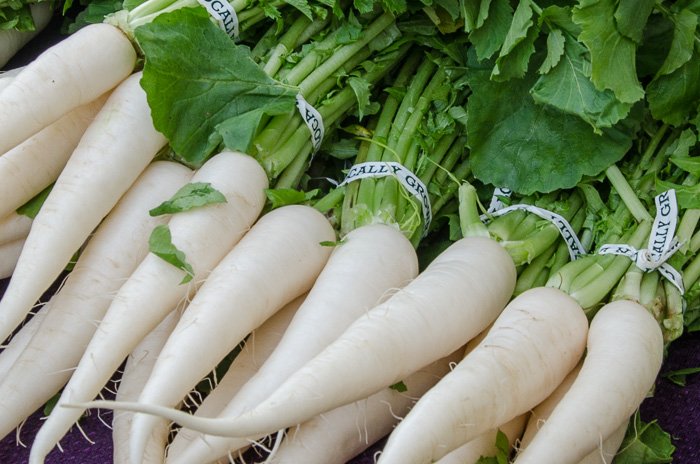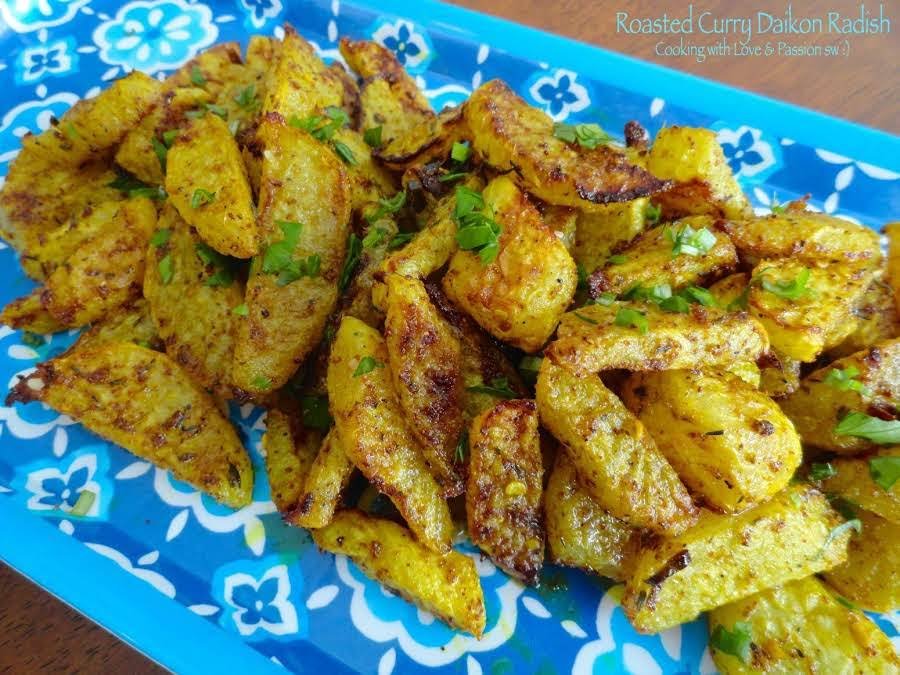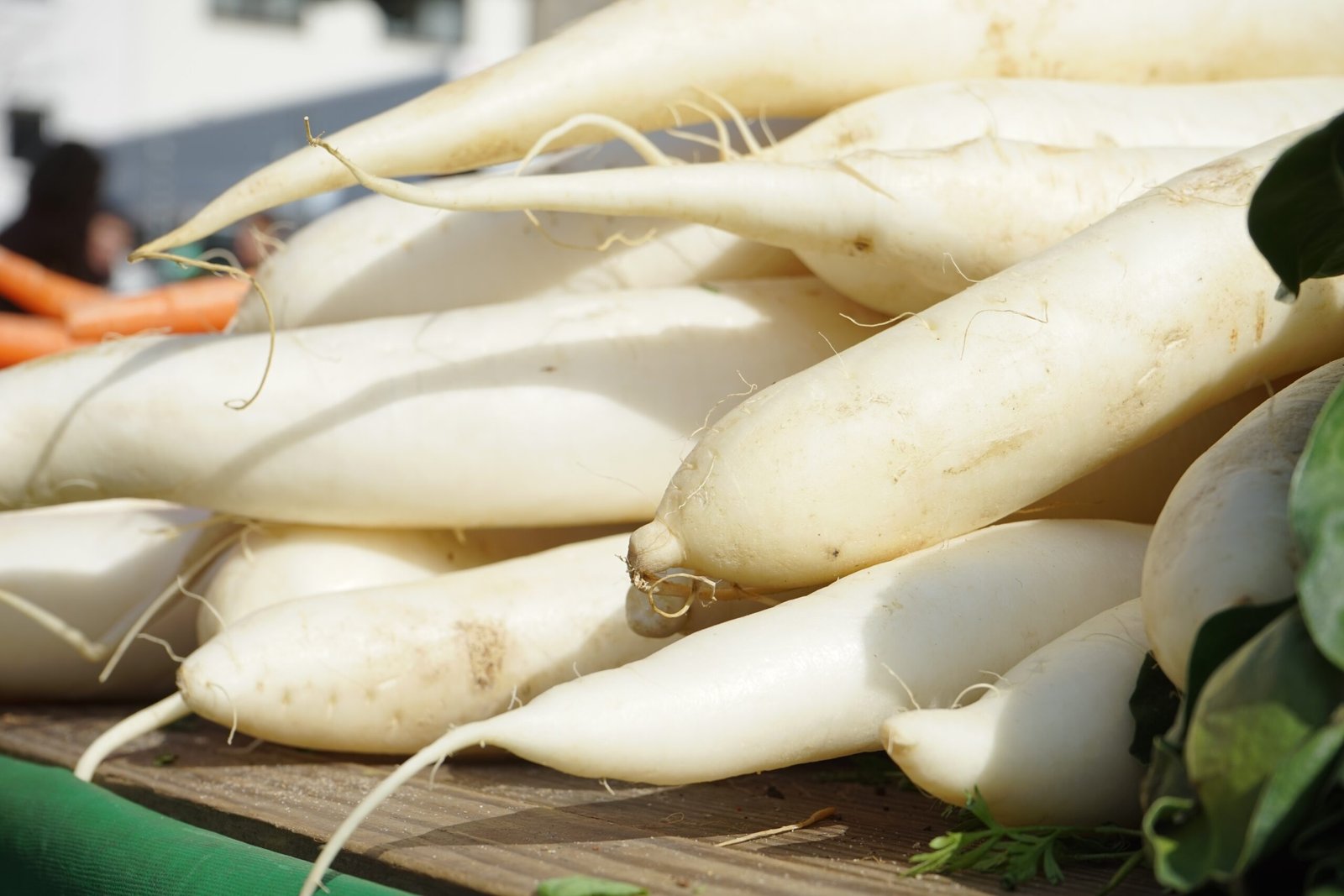We love mooli ke paranthe and spicy pickles in winter, but radish is much more than a seasonal favorite. This crunchy root vegetable is a powerhouse of nutrients that can enhance your digestive health, immunity, heart health, and skin glow. Curious to know how
🧪 Nutritional Value of Radish (Per 100g Raw Radish)

| Nutrient | Amount |
|---|---|
| Calories | 16 kcal |
| Carbohydrates | 3.4 g |
| Dietary Fiber | 1.6 g |
| Protein | 0.7 g |
| Fat | 0.1 g |
| Vitamin C | 15 mg (25% DV) |
| Folate (Vitamin B9) | 25 µg |
| Potassium | 233 mg |
| Calcium | 25 mg |
| Magnesium | 10 mg |
| Phosphorus | 20 mg |
| Zinc | 0.3 mg |
| Water Content | ~95% |
🔗 USDA Source – Radish Nutrient Data
LSI Keywords: radish calories, radish vitamins, nutrients in white radish, low-calorie vegetable, water-rich food
✅ Top Health Benefits of Mooli (Radish)
1️⃣ Supports Digestive Health
Radish is high in fiber, which aids digestion and relieves constipation, bloating, and acidity. It stimulates bile production, cleanses the liver, and helps flush toxins from the body.
🔗 Healthline: Radish Benefits for Digestion
LSI Keywords: digestion-friendly foods, fiber-rich vegetable, mooli for gut
2️⃣ Boosts Immunity
Thanks to its high Vitamin C, radish boosts your immune system, wards off infections like cold and cough, and reduces oxidative stress caused by free radicals.
🔗 Medical News Today: Vitamin C Benefits
LSI Keywords: immune-boosting vegetables, winter cold remedy, vitamin C source
3️⃣ Good for Heart Health
Radish contains anthocyanins and potassium, which help manage blood pressure, lower cholesterol, and reduce the risk of heart diseases.
🔗 Harvard Health: Potassium & Heart Health
LSI Keywords: heart-healthy vegetables, potassium-rich foods, cholesterol reducer
4️⃣ Promotes Healthy Skin & Hair
Rich in antioxidants, zinc, and vitamin C, radish helps maintain glowing skin, fights acne and rashes, and even helps with dandruff and hair fall when applied or consumed regularly.
🔗 Healthline: Foods for Healthy Skin
LSI Keywords: skin-clearing foods, zinc vegetables, glow from within
5️⃣ Supports Weight Loss & Hydration
Low in calories, fat-free, and made up of 95% water, mooli keeps you full and hydrated—perfect for weight loss diets.
🔗 Verywell Fit: Radish Nutrition & Weight Loss
LSI Keywords: low-calorie vegetable, hydrating food, fat-burning vegetable
6️⃣ Reduces Risk of Diabetes
Radish has a low glycemic index and helps regulate blood sugar levels, making it beneficial for people with Type 2 Diabetes.
🔗 PubMed: Radish and Blood Sugar Regulation
LSI Keywords: diabetic-friendly foods, glycemic index of radish, mooli for diabetes
7️⃣ Detoxifies Liver and Kidneys
Radish supports detox pathways by boosting enzyme production in the liver and increasing urination, thus cleansing the kidneys.
🔗 NCBI: Radish Detox Effects
LSI Keywords: natural detox vegetable, liver cleansing foods, kidney support diet
🍽️ How to Eat Mooli – Delicious Ways to Include It in Your Diet

Here are some tasty and traditional ways to enjoy this versatile root:
| Method | Description |
|---|---|
| 🫓 Mooli Paratha | A favorite North Indian breakfast—radish-stuffed flatbread |
| 🥗 Raw Salad | Sliced or grated with lemon, salt & black pepper |
| 🍲 Mooli Curry (Sabzi) | Spiced radish cooked with turmeric and cumin |
| 🌶️ Mullangi Pachadi | Andhra-style radish chutney |
| 🧃 Radish Juice | Detox drink with carrot or ginger |
| 🍜 Radish Soup | Asian-style soup with tofu or miso |
| 🥪 Mooli Sandwich | Grated radish, avocado, goat cheese on multigrain bread |
| 🧈 Pickled Mooli (Achaar) | Fermented with mustard oil and spices |
🔗 Tarladalal: Indian Radish Recipes
LSI Keywords: daikon recipes, Indian radish dishes, radish juice for detox, mullangi uses
⚠️ Side Effects of Eating Too Much Mooli
Although radish is safe and healthy, excessive consumption can lead to:
❌ 1. Gas, Bloating & Indigestion
Too much fiber can overwhelm your gut, especially if raw.
❌ 2. Thyroid Issues
Mooli contains goitrogens, which may interfere with thyroid hormone production in people with hypothyroidism.
❌ 3. Low Blood Pressure
Radish naturally reduces BP—avoid large quantities if you already have low BP or take medication.
❌ 4. Kidney Stones (in some cases)
Due to its oxalate content, very high intake might not be suitable for people prone to kidney stones.
🔗 Cleveland Clinic: Cruciferous Vegetables & Thyroid
🩺 Note: Always consult a doctor or nutritionist before making major changes to your diet, especially if you have existing health conditions.
📝 Final Thoughts
Mooli is a superfood for winter and beyond—a crunchy, water-rich, low-calorie vegetable that improves digestion, boosts immunity, promotes heart and skin health, and supports weight loss.
✅ Summary of Benefits:
- Improves digestion
- Boosts immunity
- Fights cold and infections
- Supports heart and kidney health
- Enhances skin glow
- Aids weight loss
- Lowers cholesterol and sugar levels
Whether raw, cooked, pickled, or juiced—mooli deserves a spot in your weekly diet.

